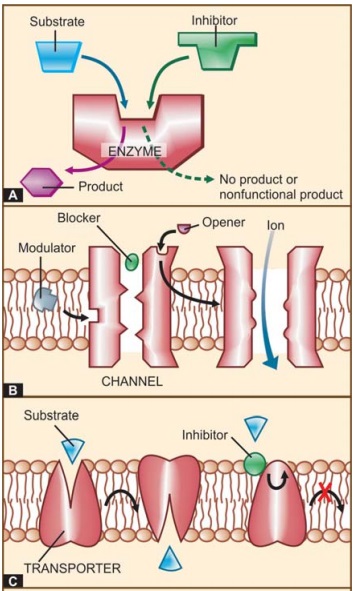Transporters
| Home | | Pharmacology |Chapter: Essential pharmacology : Pharmacodynamics Mechanism Of Drug Action; Receptor Pharmacology
Several substrates are translocated across membranes by binding to specific transporters (carriers) which either facilitate diffusion in the direction of the concentration gradient or pump the metabolite/ion against the concentration gradient using metabolic energy.
TRANSPORTERS
Several substrates are translocated across membranes by binding to specific transporters (carriers) which either facilitate diffusion in the direction of the concentration gradient or pump the metabolite/ion against the concentration gradient using metabolic energy. Many drugs produce their action by directly interacting with the solute carrier (SLC) class of transporter proteins to inhibit the ongoing physiological transport of the metabolite/ion (Fig. 4.1C).

Examples are:
§ Desipramine and
cocaine block neuronal reuptake of noradrenaline by interacting with
norepinephrine transporter (NET).
§ Fluoxetine (and other
SSRIs) inhibit neuronal reuptake of 5HT by interacting with serotonin
transporter (SERT).
§ Amphetamines
selectively block dopamine reuptake in brain neurons by dopamine transporter
(DAT).
§ Reserpine blocks the
granular reuptake of noradrenaline and 5HT by the vesicular amine transporter.
§ Hemicholinium blocks
choline uptake into cholinergic neurones and depletes acetylcholine.
§ The anticonvulsant
tiagabine acts by inhibiting reuptake of GABA into brain neurones by GABA
transporter GAT 1.
§ Furosemide inhibits
the Na+K+2Cl¯ cotransporter in the ascending limb of loop of Henle.
§ Hydrochlorothiazide
inhibits the Na+Cl¯ symporter in the early distal tubule.
§ Probenecid inhibits
active transport of organic acids (uric acid, penicillin) in renal tubules by
interacting with organic anion transporter (OAT).
